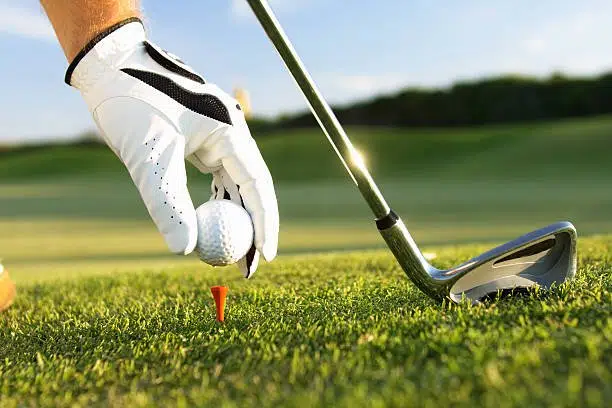As a high-handicap player, there are a few essential qualities you need in a golf ball.
Firstly, they need to be affordable, as there’s a fair chance you’ll lose a few most rounds.
Secondly, they need to fly far and straight with minimal spin because as a high handicapper it’s likely you swing a lot slower, and are a lot less accurate, than elite players.
And lastly, you need something that is soft enough and has just enough stopping power that it won’t roll straight through the back of the green when you actually manage to hit one in regulation.
When assessing the latest range of golf balls against these criteria, I’ve found the 11 listed below to be your best options:
- Callaway Supersoft
- Srixon Soft Feel
- Titleist TruFeel
- TaylorMade Distance Plus
- Volvik T2
- Bridgestone e6
- Maxfli Softfli Matte
- Wilson Ultra 500
- TaylorMade Project (a)
- Callaway ERC Triple Track
- Kirkland Signature 3-Piece
As a high handicapper, it’s likely you’re already using one of these balls already – but if you’re looking at making a change, read on as I’ll explain the pros and cons of each of these brands to help you make an informed decision.
Table of contents
What golf ball should a high handicapper use?
Beginner and high handicappers should use golf balls that are two-piece, low-spinning and low-compression as they will generate the greatest distance but least curvature through the air. As the player improves, only then should they consider moving to a three-piece, higher spin ball.
Golfers who regularly shoot in the 100s need as much assistance as possible to keep their ball in play, so choosing the correct model – with the above characteristics – will give them the greatest chance of keeping their shots in the fairway.
Let’s look at the reasons why this is the case.
Two-piece versus three-piece golf ball
Golf balls can be constructed with anywhere from one layer of materials (often seen in range balls), right up to five layers (often seen in the best-quality balls).
High handicappers are best to use a two-piece ball as it is likely to give you the straightest shots, while maximising distance, largely because they will spin less than a ball with more layers.
If the ball is less receptive, it means it will curve less through the air – considering most high handicappers either hit big fades or draws, minimising the ball’s movement through the air is a top priority and using the correct ball will help with this.
Once you start getting better control of your shots, it would definitely be worth moving to a three-piece ball – like the TaylorMade Project (a) – but until then, try sticking to two-piece balls.
Low spin versus high spin golf ball
If you’re a beginner or high handicapper, you definitely want to use a ball with low spin.
When your ball has less spin, you’ll be able to get more distance out of your shots and hit more fairways as they’ll fly straighter than a high-spin ball (which is more prone to hooks and slices).
When you start improving, you’ll want to move to a ball that spins more as they give you more control and can stop quicker on the greens – and help you spin your wedges back towards the hole like the pros.
But until then, stick to something with minimal spin.
Low versus high compression golf ball
Compression is the amount of force it takes to properly compress the ball.
Given high handicappers often have slower swing speeds – either due to their age, or poor technique (if you want more lag, read here) – you want a low compression ball as it will help maximise your distance and help you hit it straight.
If you don’t have a swing speed over 95mph, you won’t be able to adequately compress harder balls (like the ones used by the pros), resulting in less distance and likely more curvature on your shots through the air.
Best golf balls for high handicappers
Now that you know what ball characteristics to look for as a high handicapper, it’s time to list the best options available to buy.
A big factor in your purchase will undoubtedly be budget – as a high handicapper, you’re likely to lose at least one ball per round and because of this you don’t want to be buying balls that are super expensive.
I’ve kept this in mind when compiling my list below and have only included balls that are super affordable for the average player (so you won’t have to worry about breaking the bank if you blaze a couple out of bounds).
Let’s take a look at each ball in more detail.
Callaway Supersoft
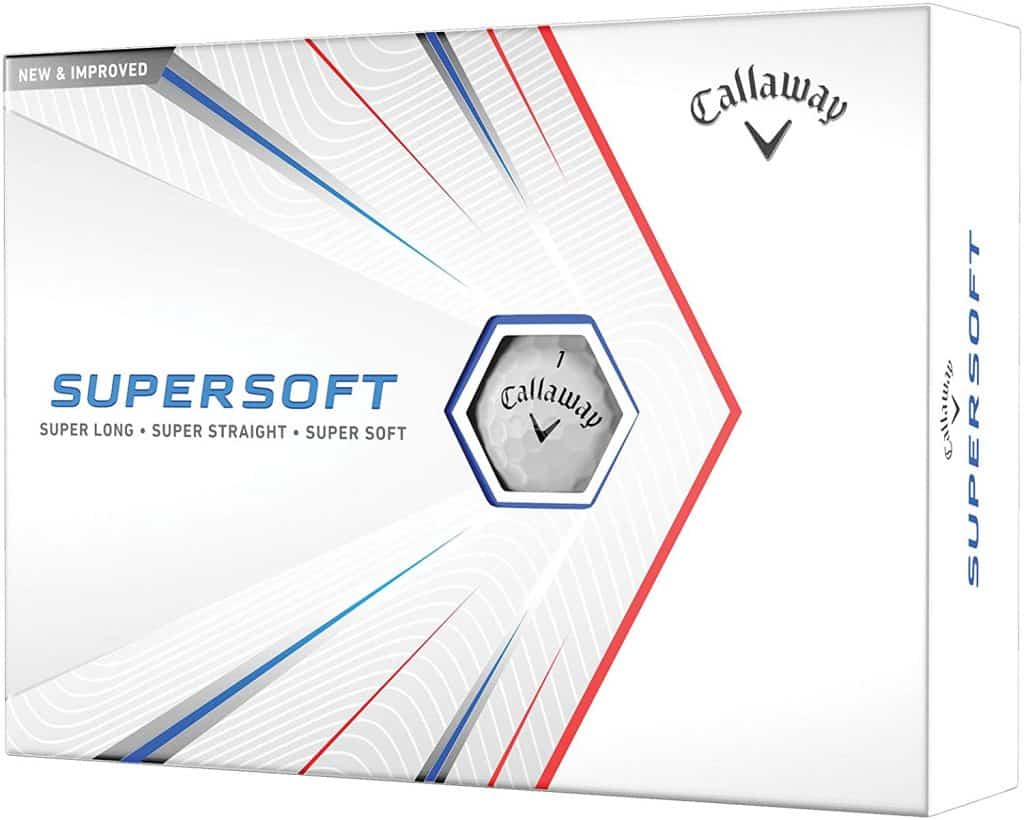
The Callaway Supersoft has been one of the most popular budget golf balls for many years and has been upgraded in 2021 to improve performance even further.
The Supersoft is a two-piece composition, making it perfect for high handicappers, with its outer cover featuring an innovative ‘Paraloid’ hybrid cover that has helped Callaway manufacture a ball that produces fast speed, high launch and low spin, without sacrificing on durability and greenside control.
These characteristics are everything you want in a beginner golf ball, as is the Soft Compression Core which helps players maximise distance, even with slower swing speeds.
At an extremely affordable price, the Callaway Supersoft has been an excellent choice for high handicappers for a long time, and remains a great option today.
Srixon Soft Feel
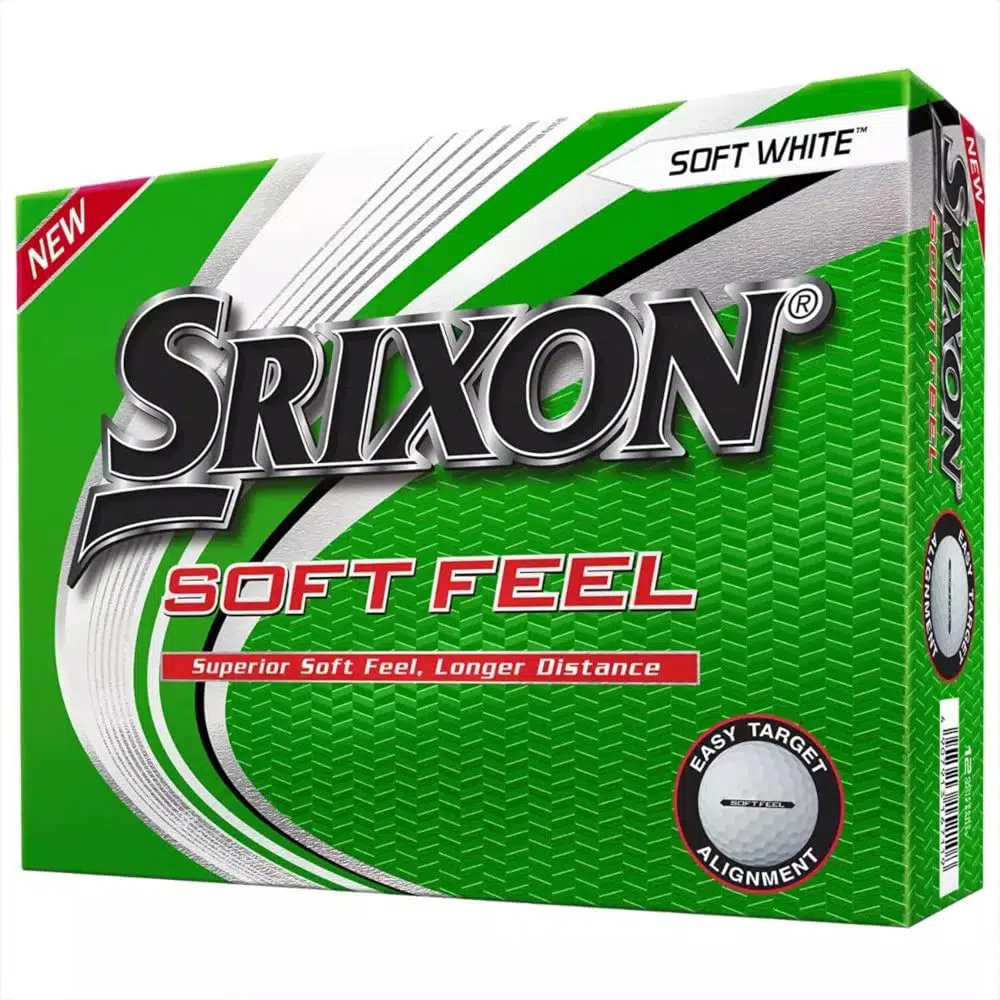
The Srixon Soft Feel golf ball has been around for so long that it’s currently in its 12th generation – a testament to the manufacturer for continuing to improve the design year after year.
When you think good quality, budget golf balls, the Srixon Soft Feel is one of the first that comes to mind – personally, I used them a lot when I first took up the game.
As the name suggests, this ball feels beautifully soft off the face, with Srixon stating it boasts the “softest FastLayer Core to date”.
Srixon has also reduced drag on the ball via its 338 Speed Dimple pattern and two-piece construction, which will help you maximise distance without sacrificing on accuracy.
Having gamed these balls previously, I can certainly vouch for how great the Srixon Soft Feel performs – and at a budget price, you’d be mad not to give them a go.
Titleist TruFeel
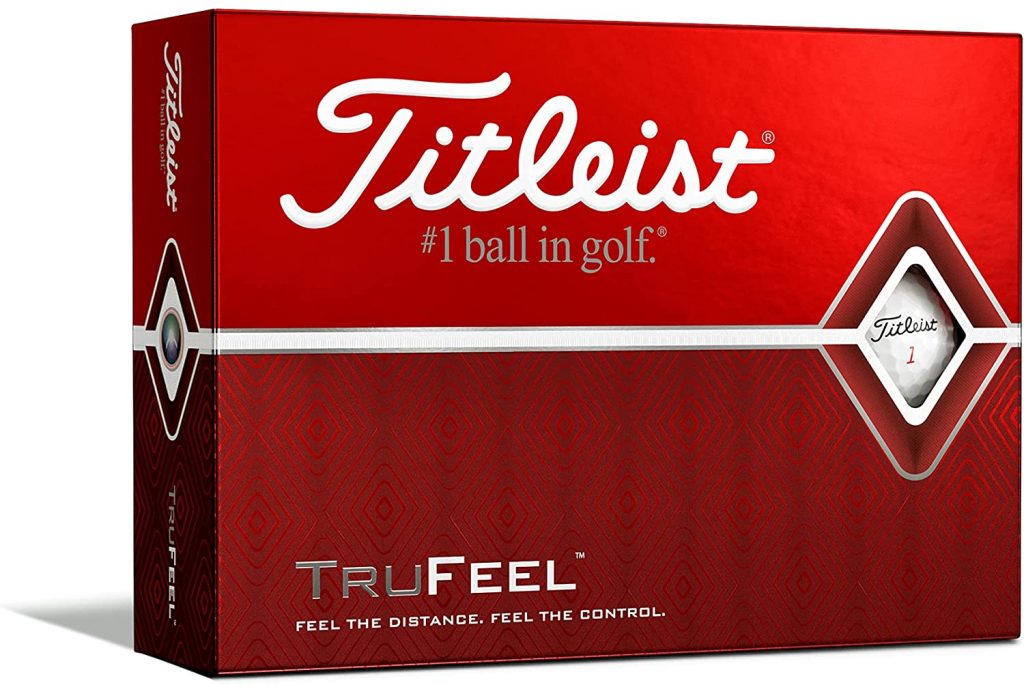
The Titleist TruFeel is undoubtedly the manufacturer’s best option at a budget price point, with its characteristics aligning perfectly for high handicap players.
While Titleist is more renowned for its premium Pro V1 and Pro V1x balls, those models will likely set you back around $70 for a dozen – by comparison, a deck of TruFeels will cost a fraction of this price (meaning you won’t feel bad losing a few during a round).
The TruFeel is the softest ball in Titleist’s catalogue, with its TruTouch core and TruFit aerodynamics increasing distance and decreasing spin, without sacrificing feel.
The ball is a two-piece construction, minimising spin with both long and short irons but still giving enough greenside control to get up-and-down with regularity.
Titleist recommend this ball for players “who want the softest possible feel above all else”, which will no doubt suit many high handicappers.
If you’re after a reputable brand at a modest price, you can go past the Titleist TruFeel.
TaylorMade Distance Plus
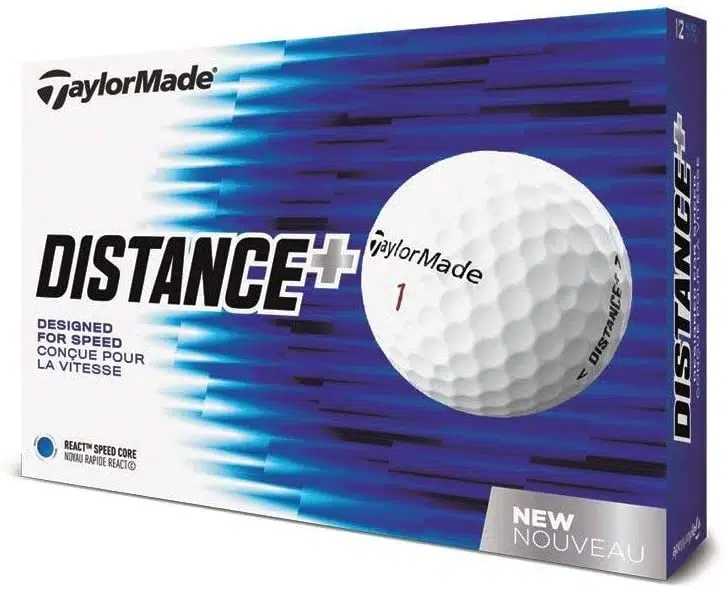
The TaylorMade Distance Plus golf ball is designed for one thing only – speed.
Courtesy of the REACT Speed Core, the Distance Plus ball still provides a super-soft feel (despite being a two-piece construction), with its low compression composition helping to maximise distance.
The ball is created using a soft ionomer cover which improves feel off the clubface, particularly when chipping and putting, but also protects against scuffs and scratches to improve longevity (perfect for high handicappers, who hit the ball more times per round than elite golfers).
The other bonus of the TaylorMade Distance Plus is it comes emblazoned with a thick, dark alignment marker – making it simple and easy to line your ball up to your target whether on the tee, or the greens.
In terms of budget balls for high handicappers, this is arguably the best TaylorMade has to offer.
Volvik T2
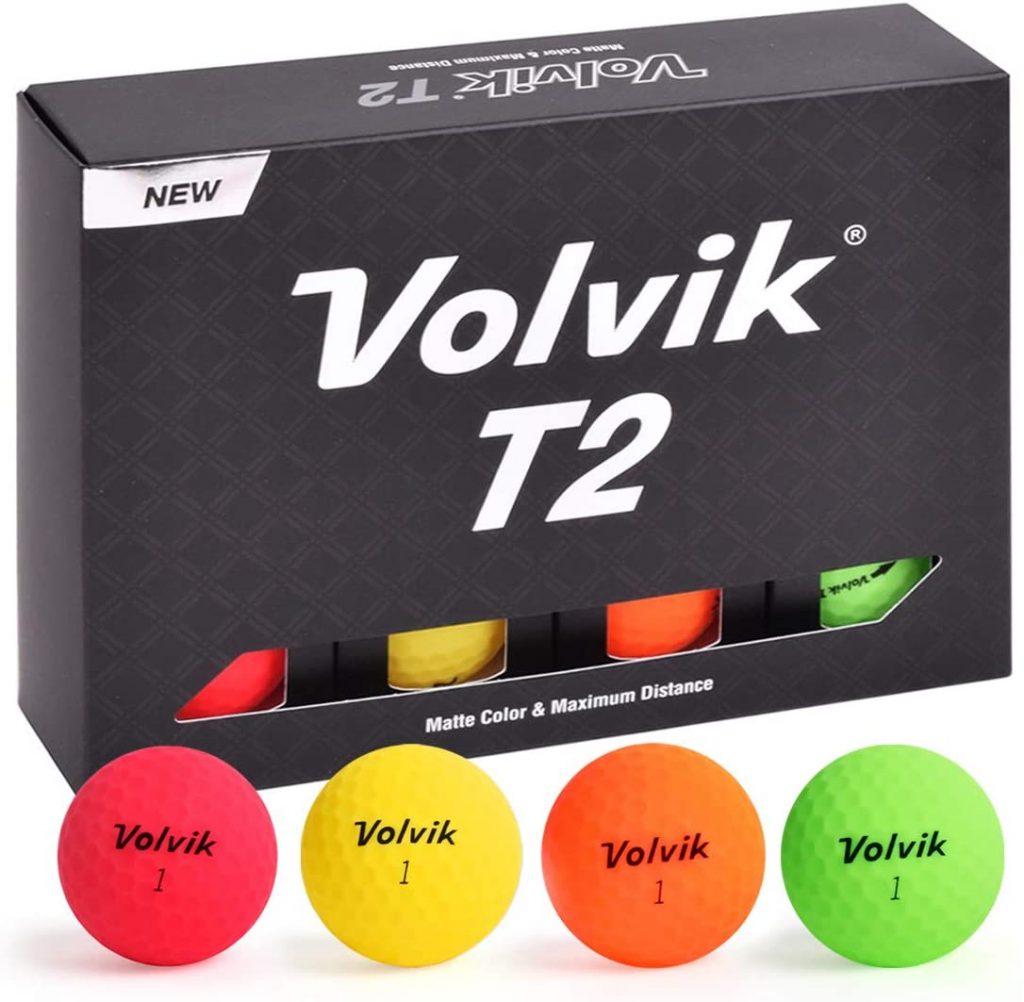
Volvik brands itself as the most colorful ball in golf – and with their fluorescent, bright, eye-catching tones it’s hard to argue with them.
But while Volkik’s higher-quality three-piece balls come at a steeper price tag, the more affordable two-piece T2 model doesn’t sacrifice any of the color and vibrancy but is far more practical for high handicappers.
The Volvik T2 is wrapped in an ionomer cover which helps minimise excessive curvature through the air, due to lower spin, but still gives you a soft feeling off the clubface.
The ionomer is also a harder material than urethane, which is used for balls of three-piece composition or more, meaning they are very durable and can be used multiple times without significantly affecting performance.
But the biggest thing that sets the Volvik T2 apart from other balls on this list is undoubtedly the vibrant color selection available – from bright red and yellow, to orange and green.
If you’re a high handicapper who likes making a statement on the first tee, the Volvik ball will certainly help you do that.
Bridgestone e6
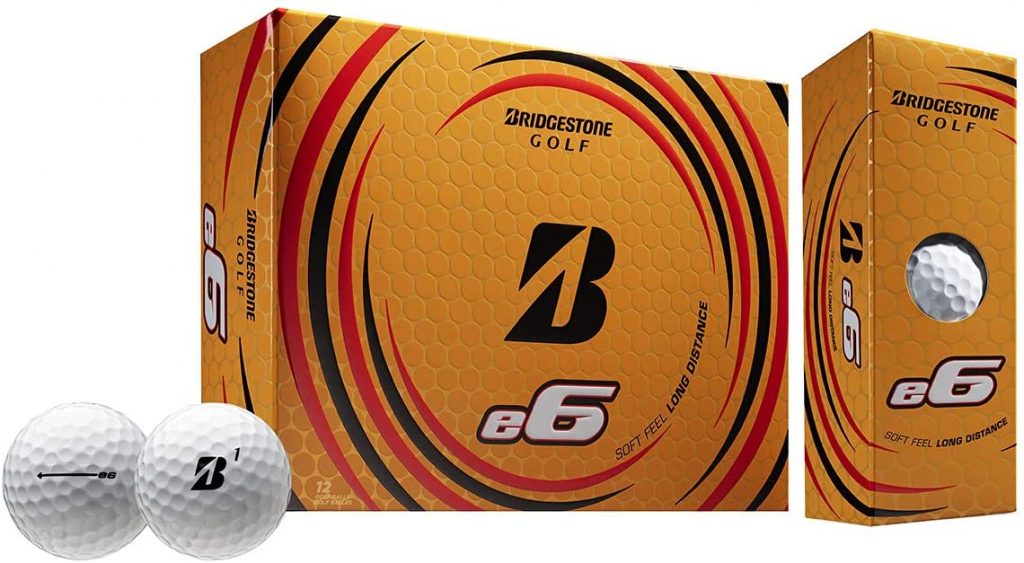
While the Bridgestone e6 may not be the exact ball Tiger Woods uses (he plays a Bridgestone Tour BXS), it’s from the same manufacturer – meaning you know it’s of decent quality.
I’ve gamed Bridgestones in the past and have always found them to be an incredibly long ball off the tee, while still retaining a nice, soft feel off the clubface.
The e6 model utilises a two-piece construction meaning, as I’ve explained earlier, it will be less impacted by spin through the air, which is ideal for high handicappers.
Similarly, this ball is low compression (another ‘tick’ on the list of requirements for high handicappers) and comes in both white and yellow colors.
The Bridgestone e6 does tend to spin a little more than some of the other two-piece balls higher on this list, meaning it may give you a little more control around the greens (but also be susceptible to added curvature in flight).
Overall, I’ve always found this ball to perfectly good to use as an amateur – and at a bargain price, there’s very few negatives that spring to mind.
Maxfli Softfli Matte
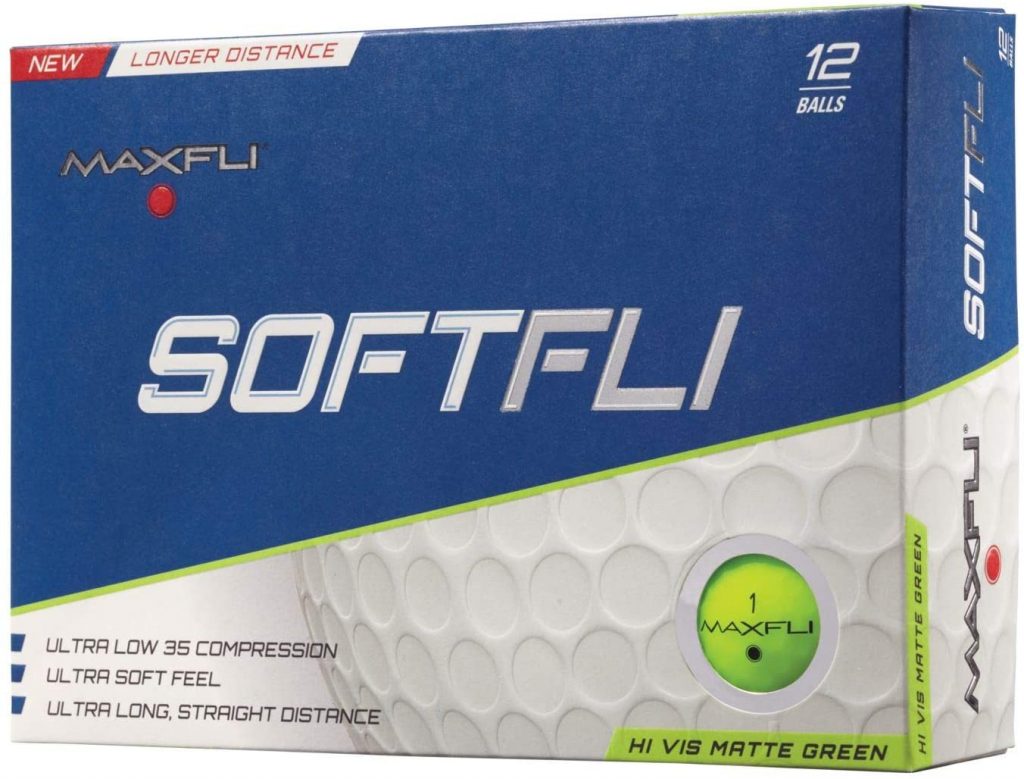
The Maxfli Softfli is, as its name suggests, the softest ball available from the Maxlfi range.
It has a super-low 35 compression compared to 85 compression of the Maxfli Revolution, adding extra feel and feedback off the clubface.
According to Maxfli, this ball has a reformulated core construction which gives it that softer feel at impact, without losing any ball speed and maintaining a low spin rate – the ultimate combination for a high handicapper.
Finally, the matte cover – available in green, white, pink, blue and orange – makes the Softfli easy to see off the tee, and allows you to show off some flare on the course.
This is a perfectly good, affordable ball for golfers who are still improving.
Wilson Ultra 500
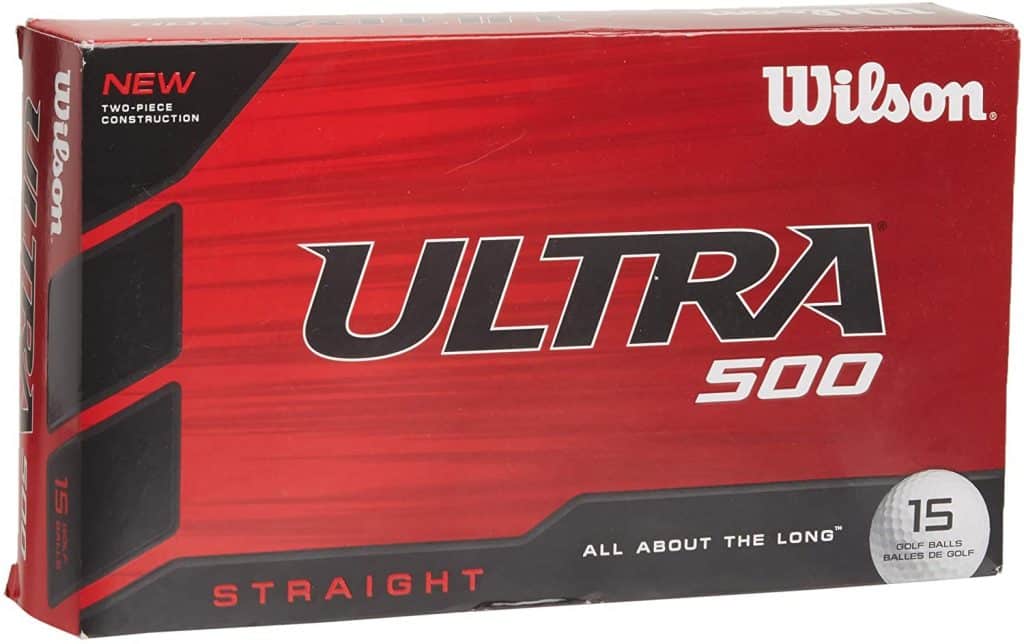
When I think of beginner golf balls, Wilson is one brand that immediately comes to mind.
For the majority of golfers out there, we’ve all at some point tried using Wilson balls – whether or not you like them often depends on the player.
The Wilson Ultra 500 is a two-piece construction cased in a ‘cut-proof’ cover for ultimate durability.
Billed as the ‘original distance ball’, the ultra is certainly long off the tee courtesy of a high-energy titanium core.
But even high handicappers want some level of feel off the clubface, and if you’re looking for a ball that balances distance with feel, there may be better options out there than the Ultra.
If you are purely driven by budget, you’ll probably not find many balls cheaper than this meaning you can blaze away without any fear of losing them.
TaylorMade Project (a)
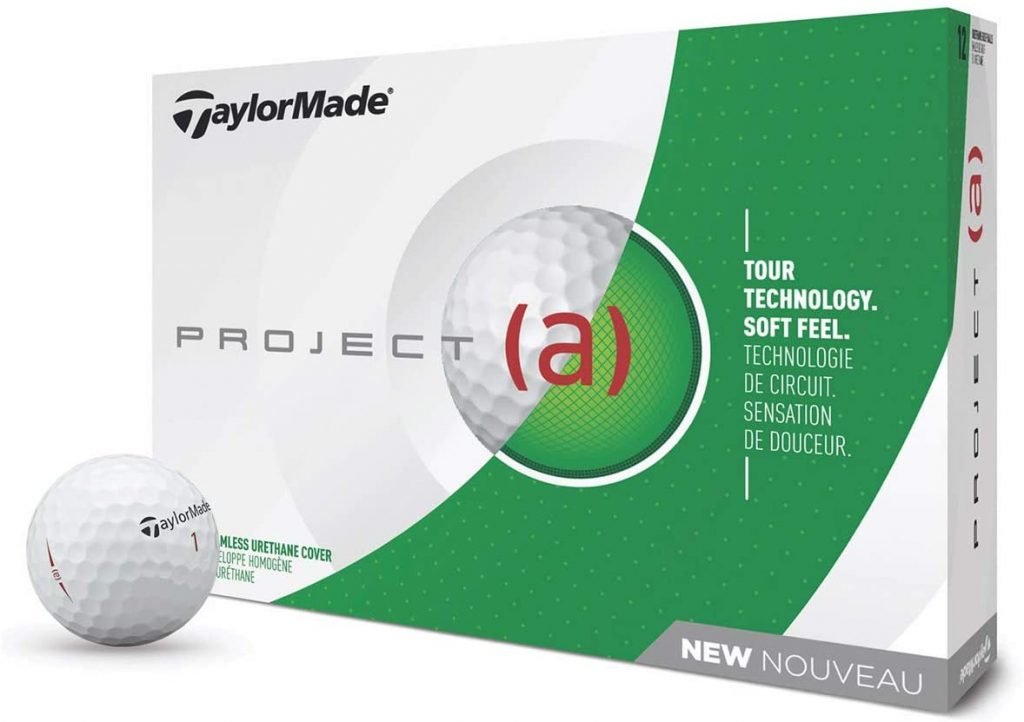
The TaylorMade Project (a) was the first intermediate ball I moved to once I started to see consistent improvement in my golf game.
As I began to gain better control of my shot shaping, the three-piece Project (a) ball gave me far better grip around the greens due to its urethane cover, which helped me lower my scores even further.
What I loved about this ball was firstly the modest price-tag that accompanies it, but secondly the nice, soft receptive feel off the clubface – largely courtesy of TaylorMade’s ‘dual-distance core’.
The latest iteration of the Project (a) ball also uses the same 322 dimple pattern as TaylorMade’s TP5 and TP5x balls – which are highly regarded on the PGA Tour – giving it excellent distance due to less drag through the air.
If you’re a high handicapper who feels ready to a three-piece ball that has slightly higher spin, and is more responsive around the greens, I cannot recommend the Project (a) highly enough as it’s served me very well in the past.
Callaway ERC Triple Track
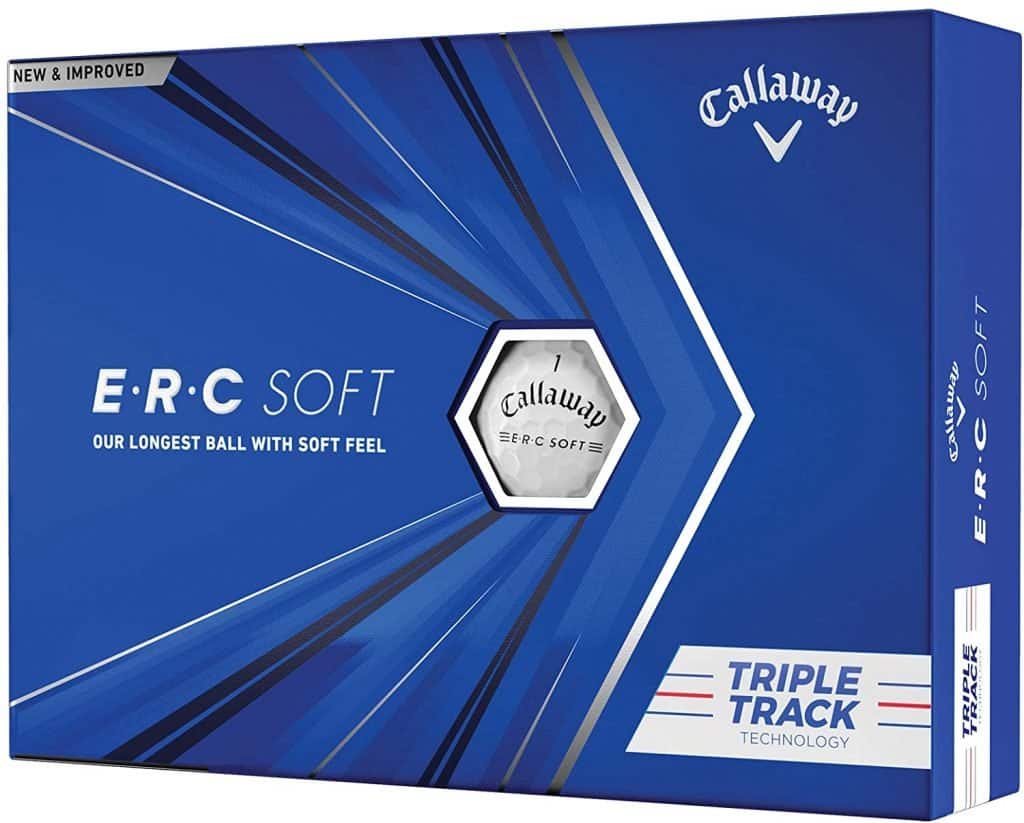
The Callaway ERC Triple Track is arguably the ball high handicappers may look to progress to once they start getting a little more consistency in their ball-striking.
Being a three-piece composition, the ERC Triple Track is a higher spin ball and therefore more susceptible to curvature through the air – meaning it will exacerbate any draw or fade spin that you impart on it, much more than the Callaway Supersoft mentioned earlier in this list.
So, if you’re prone to hitting high, weak slices you will certainly notice bigger misses and potentially greater distance losses as a high handicapper using the ERC Triple Track versus the Supersoft.
That being said, if you’re someone who feels your handicap is heading in the right direction, and want a little more spin to shape the ball and hold greens easier, this ball is a great choice.
Callaway describes it as its “longest ball with soft feel” and the triple track markings make alignment means you’ll be pointed correctly at your target every time you take a shot.
Kirkland Signature 3-Piece
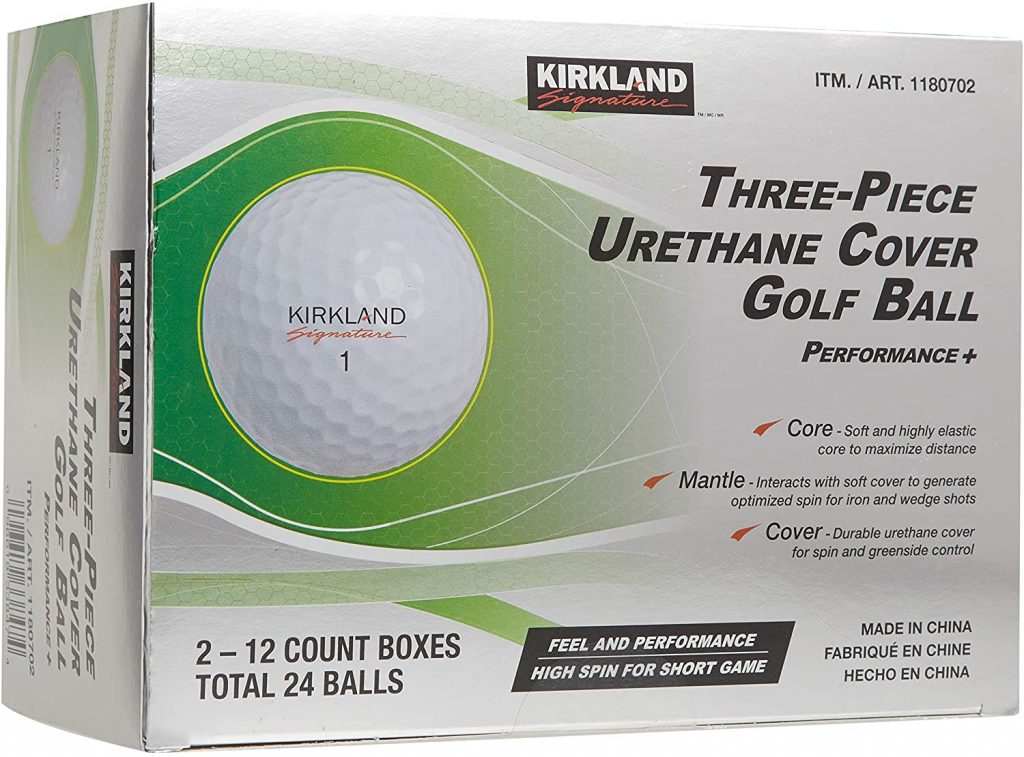
The final ball on this list – the Kirkland Signature 3-piece – is not a household name, but is certainly worth consideration as a high handicap player.
The Kirkland Signature 3-piece is made from a urethane cover and, as its name hints, is a three-piece construction.
This gives players extra feel and grip around the greens, but also means the ball is more impacted by spin during flight – which can be of detriment to high handicap golfers who struggle to control the amount of draw or fade spin they put on the ball.
But if you feel like you’re ready to make the step up from a two-piece ball, you won’t find one that’s cheaper and gives you better bang for your buck than the Kirkland 3-piece.
Two dozen Kirkland balls will cost you a similar amount to a single dozen TaylorMade Project (a) balls, without a noticeable difference in performance.
If you’re brave enough to try a ball that doesn’t come from one of the ‘big golf brands’, you’ll likely be pleasantly surprised by the Kirkland 3-piece.
Should high handicappers buy used/refurbished balls?
Buying used golf balls – often known as ‘lake balls’ – comes with risk for high handicappers. These balls have usually been retrieved from water hazards and repainted. If they have been submerged for a long time, used balls often suffer significant distance loss.
While used golf balls come at a significant discount because they are second-hand, they can perform extremely poorly if they are very old or badly waterlogged.
The problem is, you won’t know they extent of the damage when you buy them, hence the risk.
Not only can there be question marks over water damage, but there can also be doubt over whether the ball you’re buying is actually what the seller says it is.
While you may think you’re buying two dozen Titleist Pro V1s, the reality is there could be some balls mixed in that aren’t actually Pro V1s but have instead been repainted to look like one.
If you’re on a budget and are too fussed if you get a few dodgy balls added in to your order, used balls are a very affordable option – but, they certainly come with a ‘buyer beware’ tag.
Final message
As a high handicap golfer, the message is clear – you want a golf ball that is a two-piece construction, low spin, low compression and affordable to begin with.
Once you start gaining better control over your ball flight, you can then start progressing to a ball that spins a little more and is more receptive off the clubface (giving you even greater control over your shot-shaping).
Don’t be afraid to try out different balls before settling on the right one for you – the list I’ve detailed above is a great place to start.

